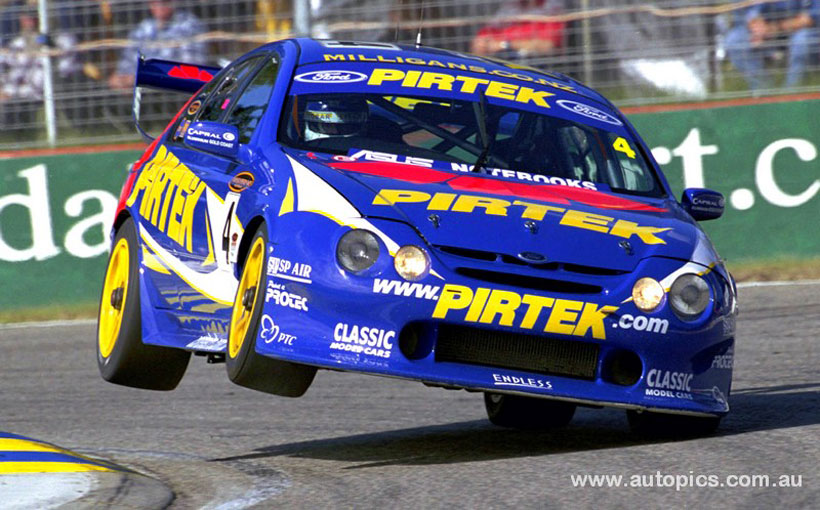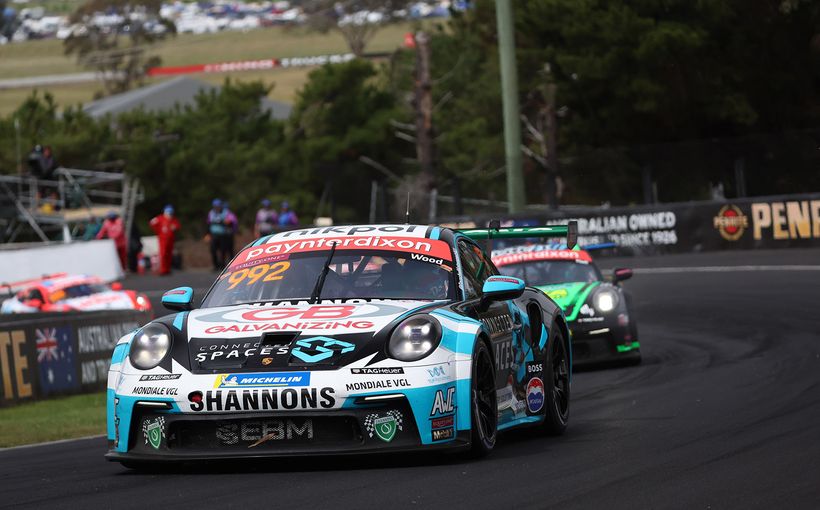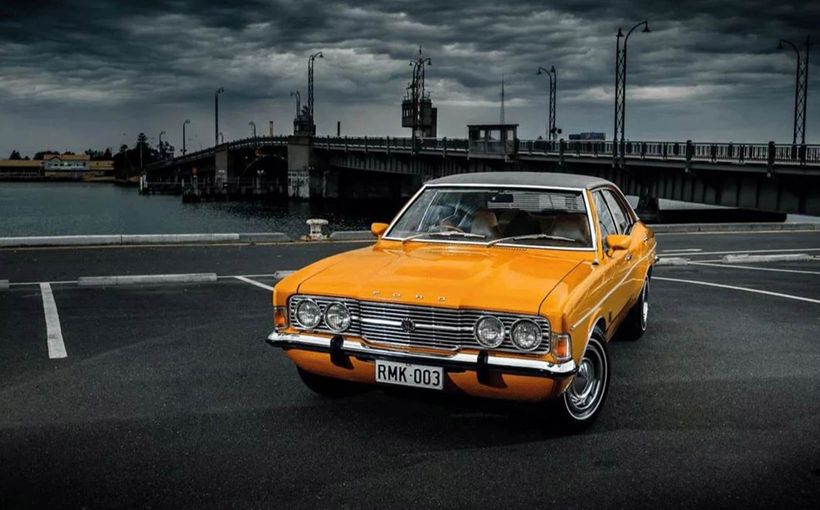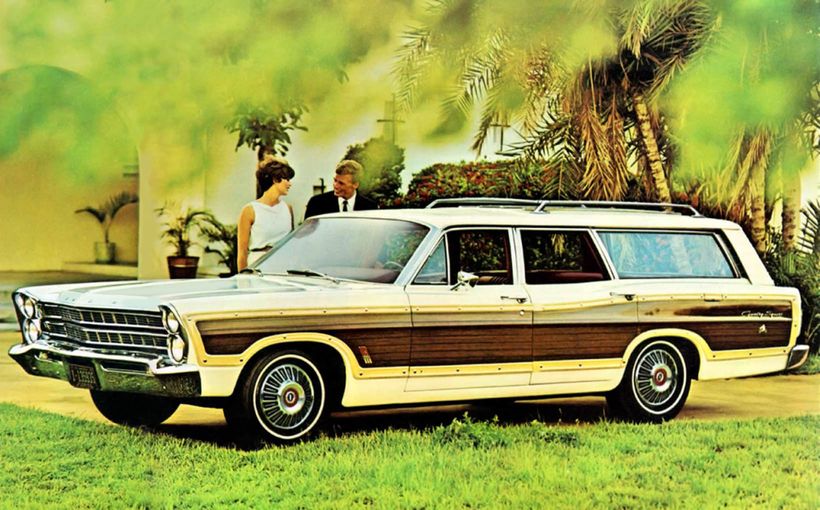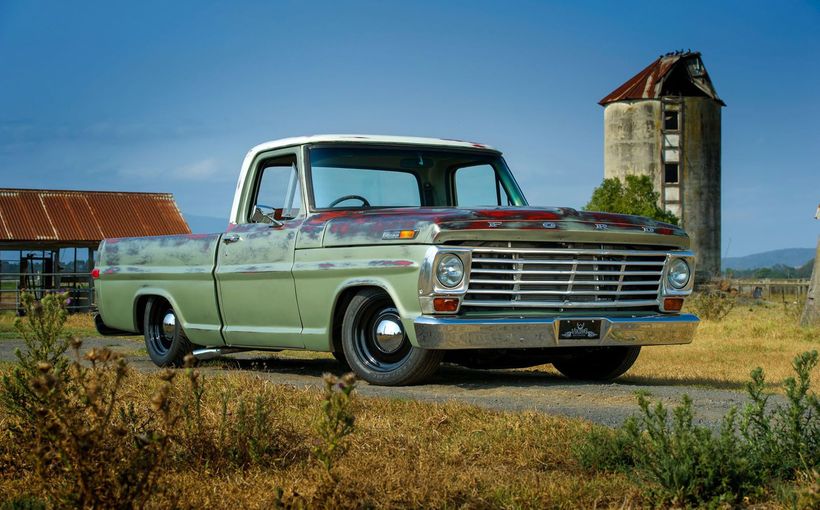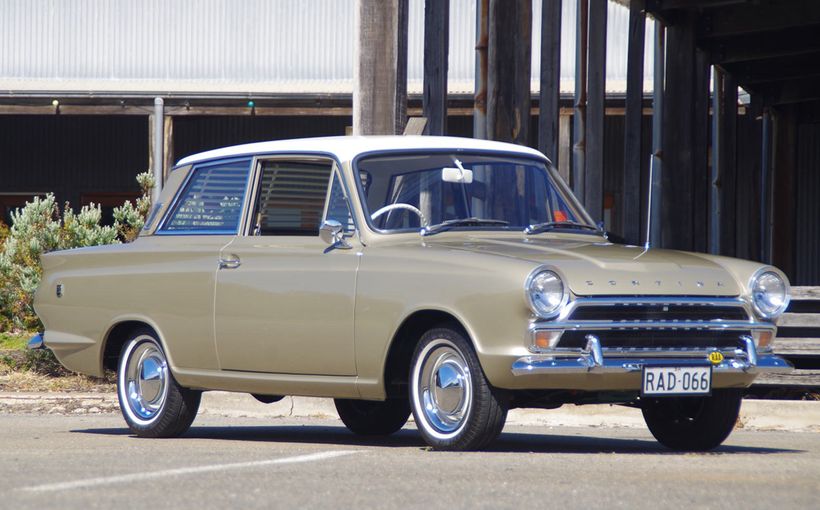Ford AU Falcon: The wing-shaped supercar that struggled to fly

“We knew the basic body shape of the car worked against downforce because when viewed in silhouette (side view) its top half (body outline) was shaped like an aircraft wing, so it provided plenty of aerodynamic lift at racing speeds,” said former AU Falcon V8 Supercar driver Mark Larkham. “There’s no question the basic shape of the AU created more lift than the VT Commodore and we had to contend with that for the whole time we raced the car.
“I actually got excited when I first saw the AU before it was released. It had a very laidback windscreen angle and drop-aways at the front of the bonnet and sides of the boot. I thought ‘wow, what a slippery car, this thing is going to be fast’ but that was on the proviso you could then put a really strong aero package around it for racing - which frankly Ford didn’t do.”
Larkham’s high expectations of the AU Falcon’s track performance were widely shared when it debuted at the beginning of the 1999 season. When released for public sale in 1998, the AU featured Ford’s ‘New Edge’ design language which with a Cd of .295 was an 11 percent improvement over the previous EL and set a new benchmark for fuel efficiency. However, it also polarised public opinion.

Even though the majority of Aussie car buyers clearly disliked the overtly curvaceous Taurus-like appearance, all sins would be forgiven if Ford’s new V8 Supercar (based on the XR8 performance model with its unique four-headlight front) proved to be the rocket-ship such a smooth shape suggested it would be. Its mission was to destroy Holden’s new VT Commodore and Ford teams couldn’t wait to launch this new weapon on the track.
However, history shows that the AU Falcon was a major disappointment. In the four seasons it competed in the V8 Supercar Championship Series (V8SCS), it was consistently outclassed by the VT Commodore and its cosmetically updated but otherwise identical VX successor.
The sobering facts are that during the four seasons the AU Falcon competed exclusively against the VT/VX Commodore at the top level of V8 Supercar racing from 1999 to 2002, it won only 8 of the 52 championship rounds contested.

That meant a mere 15 percent of the spoils went to Ford. And this was supposed to be a ‘parity’ formula in which 5.0 litre V8-powered Fords and Holdens had theoretically at least a 50 percent chance of winning each race, each round and each championship. Ford clearly was not getting a good return on its investment.
Although such a lop-sided scoreboard would at first glance suggest the AU was, in Dick Johnson speak ‘a dog that should have been left chained to the fence’, other statistics show such a judgement would be unfair.
For example, during those 52 championship rounds the AU Falcon also scored 22 pole positions, or a much healthier 42 percent of all poles which included three at the high-speed Mount Panorama circuit at Bathurst. The AU also claimed 46 fastest race laps of the 125 races held during that time, or 36 percent.

The Invisible Force
So, based on those hard facts, it would appear the AU was indeed a fast race car which had more than enough speed over one race lap or a hold-ya-breath qualifying lap to topple its Commodore rival.
Its fundamental flaw was not being able to duplicate that pace for lap after lap during a race, caused by unbalanced aerodynamics. In this case, a body shape which at racing speeds of up to 280 km/h worked like an aircraft wing in wanting to suck the AU clear into the sky, combined with a front spoiler and rear wing package that was inferior to its Commodore rival in properly countering that effect.
“So often good rubber can mask inefficiency in a chassis, but it can only do it for a short amount of time,” Larkham told Shannons Club, as he reflected on his blistering run in the Top 10 qualifying shoot-out at Bathurst in 1999 that nailed pole position for the AU in its first appearance at the Mountain.
“As racing drivers we’ve all experienced that at some stage and for me at Bathurst in ‘99 it became clear that the AU had a problem. I distinctly remember how good that car was during the qualifying lap when I took pole but I also remember how disappointed I was after about lap eight of the race when I just knew it wasn’t going to maintain it.

“It became clear that the car had a glitch in its aero, namely its ability to help turn the car in the middle of a corner when that’s not influenced by throttle use or suspension set-up. We simply needed more downforce and we needed the majority of that at the front, because the thing wouldn’t turn.”
After its lack lustre first championship season in 1999, in which Glenn Seton’s highest-placed Falcon finished fourth overall behind a trio of Commodores, the performance imbalance between Ford and Holden was put beyond doubt in the early rounds of 2000. Something needed to be done – and fast.
As one of the embattled Ford team owners, Mark Larkham took a leading role in trying to fix the problem. Logically, he arranged to track test his AU Falcon fitted with the VT Commodore’s front spoiler and centre post-mounted rear wing, on behalf of Ford and under TEGA (Touring Car Entrants Group) supervision.
The composite-fibre front spoiler designs on both cars were crucial performance components, as each featured an aerodynamic under-tray which extended rearward from the spoiler’s front lip (or splitter) to a cut-off point just ahead of the front wheels. These under-trays ran very close to the road surface, with a wide centre section that sloped upwards towards the rear to create a diffusor.

This was similar in concept to the inverted wing under-floors used in the ‘ground effect’ F1 era of the late 1970s and early ‘80s, which harnessed low pressure air flowing under the car to create a powerful vacuum that literally sucked the cars down onto the road. This development massively increased tyre grip and cornering speeds to dangerous levels.
Although the V8 Supercar spoilers produced only a fraction of the downforce achieved by those F1 cars, the superior design of the Holden version had proved to be a pivotal performance benefit for the Commodores.
Larkham’s testing was done in the hope of getting approval from Holden and TEGA to achieve aerodynamic parity between the two makes. Larkham also trialled some other concepts, which revealed more flaws in the racing AU’s aerodynamics.
“At my own expense I put a series of flutes (louvres) in a bonnet and it instantly improved lap times, there was no doubt about it,” he revealed.

“The fact that it worked so well really told you a fair bit about the AU’s problem. The high pressure air build-up under the car was getting dragged out of the flutes by the low pressure air flowing over the top of the car, so it had a material impact and that was at Queensland Raceway which is a moderately slow circuit.
“I actually pushed quite hard for those flutes to be approved as well, but the politics at the time made it impossible because everyone saw it as too extreme.”
The Commodore rear wing did not make a tangible difference during Larkham’s testing, but the front spoiler certainly did. TEGA approval was granted for the AU Falcon to use what was effectively the bottom section of the VT Commodore’s front spoiler grafted onto the AU’s top section, with the lateral join line just below the headlights. This hybrid became known as the ‘TEGA Bumper’.
It was the first historic step in V8 Supercar’s long but successful quest in achieving genuine performance parity between Falcons and Commodores. This initiative called ‘Project Blueprint’ brought unprecedented goodwill and co-operation between Ford and Holden and achieved commonality in other major performance areas.

“It (the TEGA Bumper) was some of the simplest and most effective development funding ever spent to be quite honest and it certainly paved the way to say ‘hey, from the headlights down we can run similar componentry for the good of the teams, manufacturers, sponsors and fans, the whole show,” Larkham said.
“The primary motivator behind that move was that we knew they’d (Holden) done a better job than Ford had, so it made sense to use it. It improved the car’s consistency beyond question. The AU’s original front spoiler was more pitch-sensitive largely because of the sharp point at its leading edge. The Commodore spoiler had a larger, softer radius at that point and therefore its influence as the car pitched forward under braking or squatted under acceleration was more of a constant than the AU.
“When we fitted the Commodore bumper, it wasn’t like ‘wow, we’ve just found half a second’. It was ‘wow, finally there’s some consistency and tune-ability’ which in a race car is everything because then you can start tuning into your window.
“Typically with the AU you were constantly chasing that car around, based on which circuit you were at and the average speed of the important corners. You know, some days you could go from a 700 lb front spring (rate) up to a 1300 lb front spring and still not find your way. It was just a very tough jigger to work with, it really was.”

The TEGA Bumper was introduced on the AU Falcons from round 10 of the 13-round 2000 championship, which was too late to have any impact on the Commodore juggernaut which again took the first three places in the championship. The AUs again showed great speed at Bathurst that year, claiming pole position and five of the top six places on the starting grid.
The 2001 and 2002 seasons witnessed a demoralising period of dominance by the TWR-owned Holden Racing Team and its lead driver Mark Skaife, winning two V8SCS titles and two Bathurst 1000s.
The AU Falcons were much improved and winning races and rounds, but the final championship points always told the sobering truth. VX Commodores 1-2-3-4 in 2001, with Marcos Ambrose the best-placed Falcon driver in 2002 finishing third behind the VX Commodores of Skaife and Greg Murphy.

Winning behind the scenes
For the 2003 season, Ford came out with all guns blazing under the management of fired up company boss Geoff Polites, aided by the calm expertise and experience of returning motor sport manager Howard Marsden.
The unloved AU was replaced with the latest model BA built to the new Project Blueprint rules, which with Marcos Ambrose and Stone Brothers Racing proved to be the formidable race car the AU never was.
Their two championships in 2003 and 2004, plus a third for team-mate Russell Ingall in 2005, were sweet revenge for Ford, its teams and its fans after four frustrating years of Holden dominance. So, the obvious question: how did Ford get it so wrong with the AU Falcon race car in the first place?
“Did they get it so wrong? I don’t know if they got it that wrong, I just think Holden did a better job,” Larkham said with typical pragmatism. “To be honest, on reflection I thought that Ford’s road car people were too involved with that process from the start, which was a lot different to the Holden Racing Team being able to tap directly into the vast resources of Tom Walkinshaw Racing (TWR).

“I distinctly remember there was quite a push (from Ford) about how the car needed to look and that included obviously the styling of the aero package built around the XR8. That was understandable given Ford’s investment, but the primary focus really needed to be ‘what is required to make our new car a winning race car?’”
In hindsight, Larkham said that the AU’s problems were caused by a combination of Ford’s in-and-out approach to the sport over the years, perhaps not being as committed to it as they could have been, not having the same person in the motor sport management role for any great length of time and not knowing how to play the politics of it all.
“We ended up with a lot of non-racing people coming in and out of Ford’s motor sport department, which sat under the marketing arm of the business and there was clearly a lot of interest coming from there and a heavy price was paid for that approach.
“Their intentions were always admirable, but I think there was a lack of understanding of the level that needed to be achieved and the motor racing expertise that needed to be thrown at that. It was not as simple as just putting a car in a wind tunnel on the other side of the world (Ford’s V8 Supercar aero package for the AU was developed in Lockheed’s aircraft wind tunnel in the US).

“I was on the TEGA board back then and I can tell you they were hard days. With Skaife and (Jeff) Grech (HRT team manager) and (John) Crennan (HSV/HRT boss) on the Holden side, they were tough arguments.
“We all got on pretty well but as a bunch of political animals their teams were way more cohesive than ours and well-orchestrated by a strong Holden Motor Sport department steeped in history and knowledge in how to play the game.
“The resources that went into the AU’s aero development for racing were not of the same level and I now know many years later of things that went on in the parity testing that would have absolutely had an influence on outcomes. The bottom line is the AU was never as good a race car as the Commodore from start to finish.”
Protect your Ford. Call Shannons Insurance on 13 46 46 to get a quote today.

